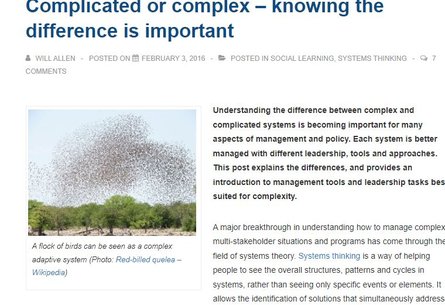
Understanding the difference between complex and complicated systems is becoming important for many aspects of management and policy. Each system is better managed with different leadership, tools and approaches. This post explains the differences, and provides an introduction to management tools and leadership tasks best suited for complexity.
A major breakthrough in understanding how to manage complex multi-stakeholder situations and programs has come through the field of systems theory. Systems thinking is a way of helping people to see the overall structures, patterns and cycles in systems, rather than seeing only specific events or elements. It allows the identification of solutions that simultaneously address different problem areas and leverage improvement throughout the wider system. It is useful, however, to distinguish between different types of systems.
